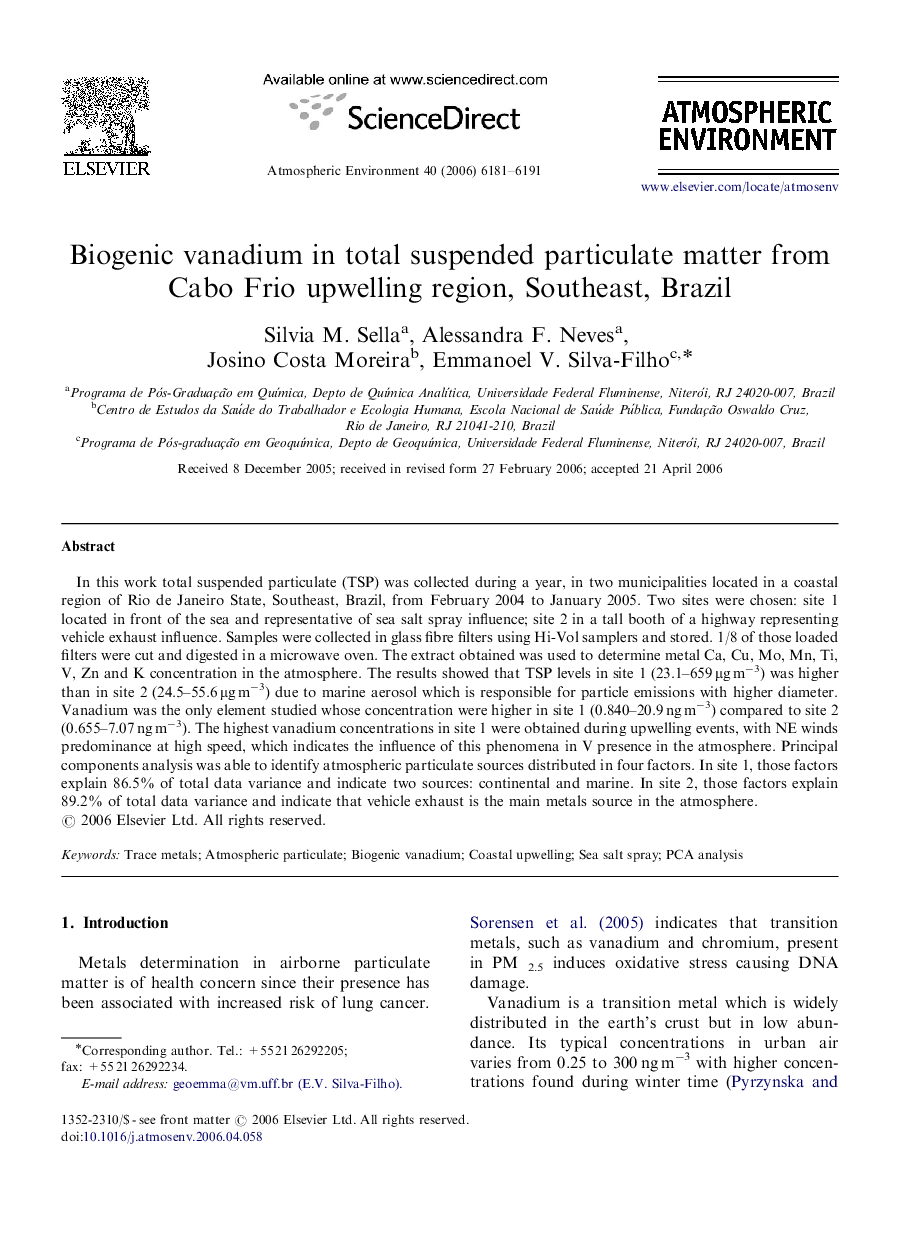| Article ID | Journal | Published Year | Pages | File Type |
|---|---|---|---|---|
| 4444099 | Atmospheric Environment | 2006 | 11 Pages |
In this work total suspended particulate (TSP) was collected during a year, in two municipalities located in a coastal region of Rio de Janeiro State, Southeast, Brazil, from February 2004 to January 2005. Two sites were chosen: site 1 located in front of the sea and representative of sea salt spray influence; site 2 in a tall booth of a highway representing vehicle exhaust influence. Samples were collected in glass fibre filters using Hi-Vol samplers and stored. 1/8 of those loaded filters were cut and digested in a microwave oven. The extract obtained was used to determine metal Ca, Cu, Mo, Mn, Ti, V, Zn and K concentration in the atmosphere. The results showed that TSP levels in site 1 (23.1–659 μg m−3) was higher than in site 2 (24.5–55.6 μg m−3) due to marine aerosol which is responsible for particle emissions with higher diameter. Vanadium was the only element studied whose concentration were higher in site 1 (0.840–20.9 ng m−3) compared to site 2 (0.655–7.07 ng m−3). The highest vanadium concentrations in site 1 were obtained during upwelling events, with NE winds predominance at high speed, which indicates the influence of this phenomena in V presence in the atmosphere. Principal components analysis was able to identify atmospheric particulate sources distributed in four factors. In site 1, those factors explain 86.5% of total data variance and indicate two sources: continental and marine. In site 2, those factors explain 89.2% of total data variance and indicate that vehicle exhaust is the main metals source in the atmosphere.
